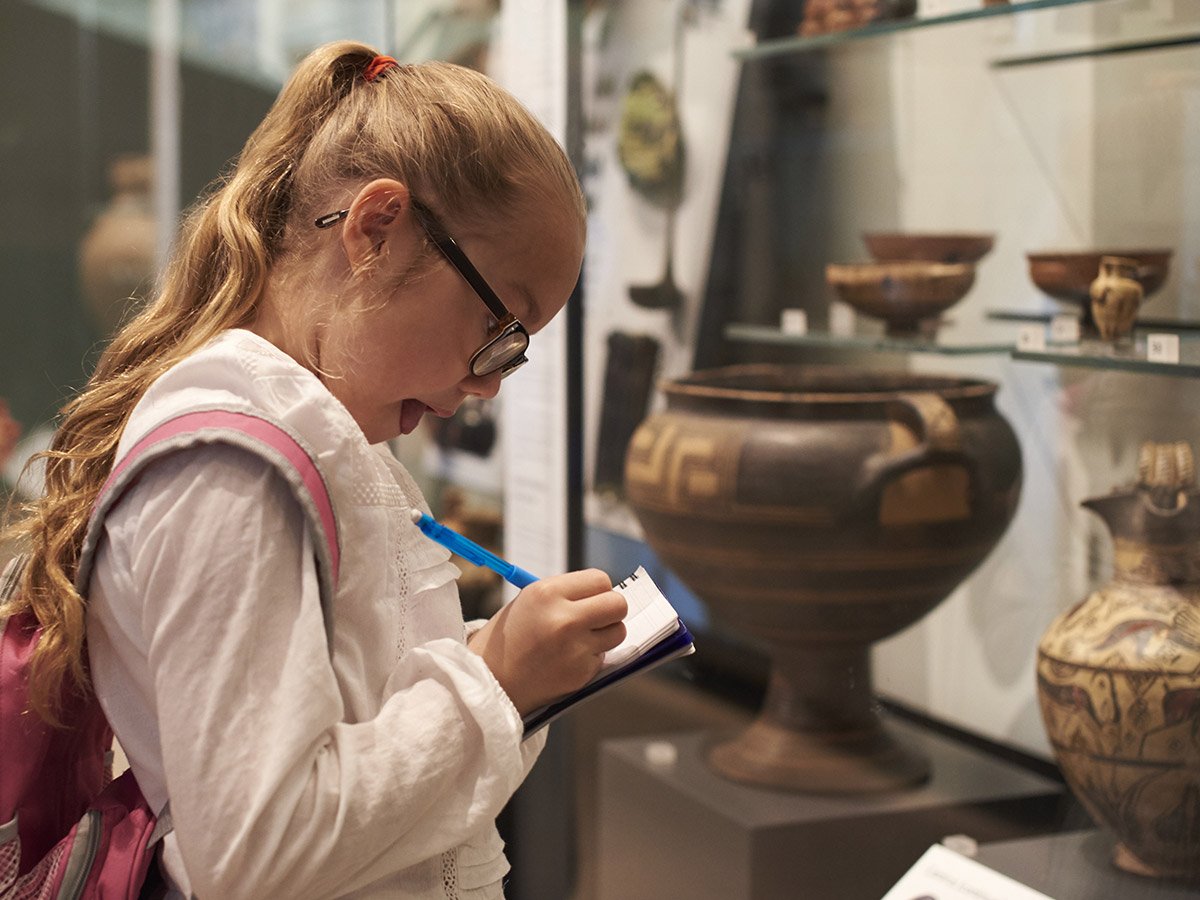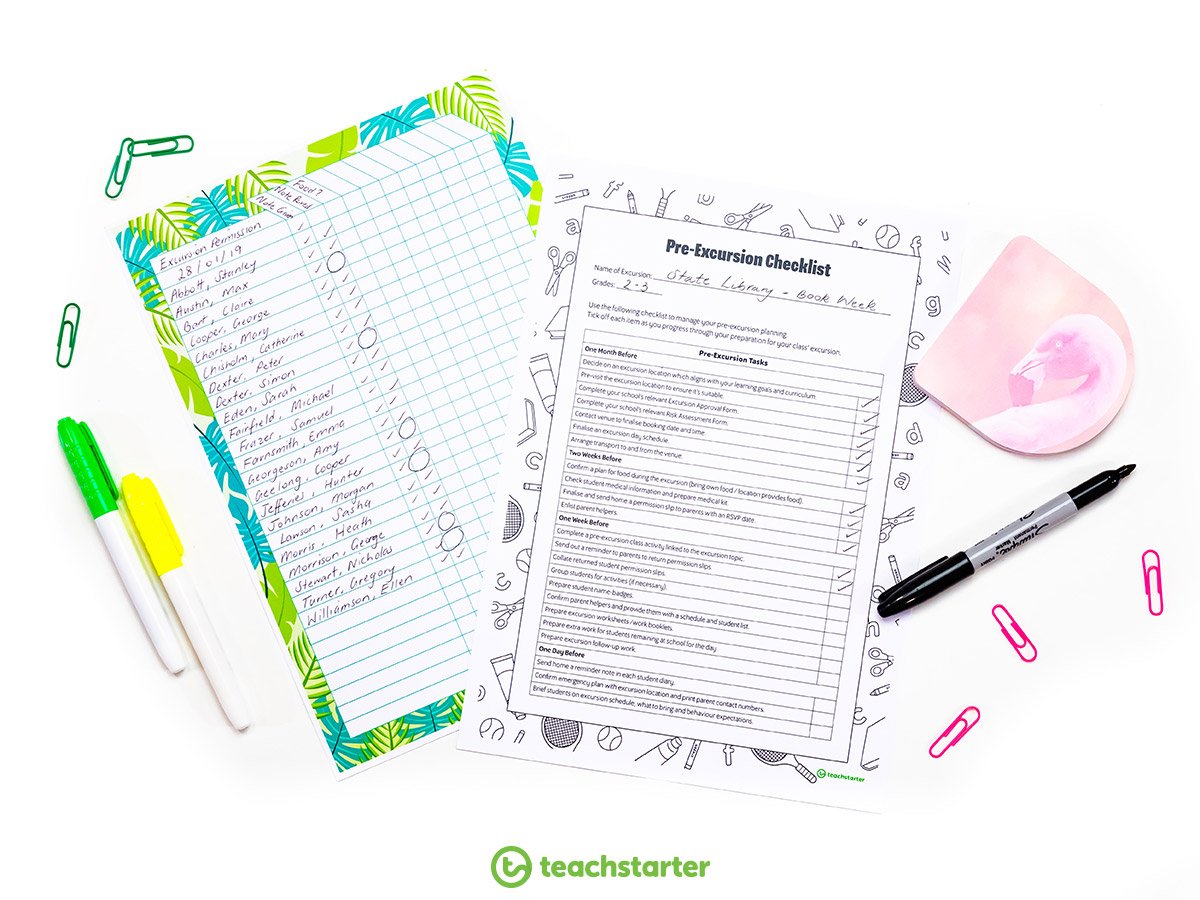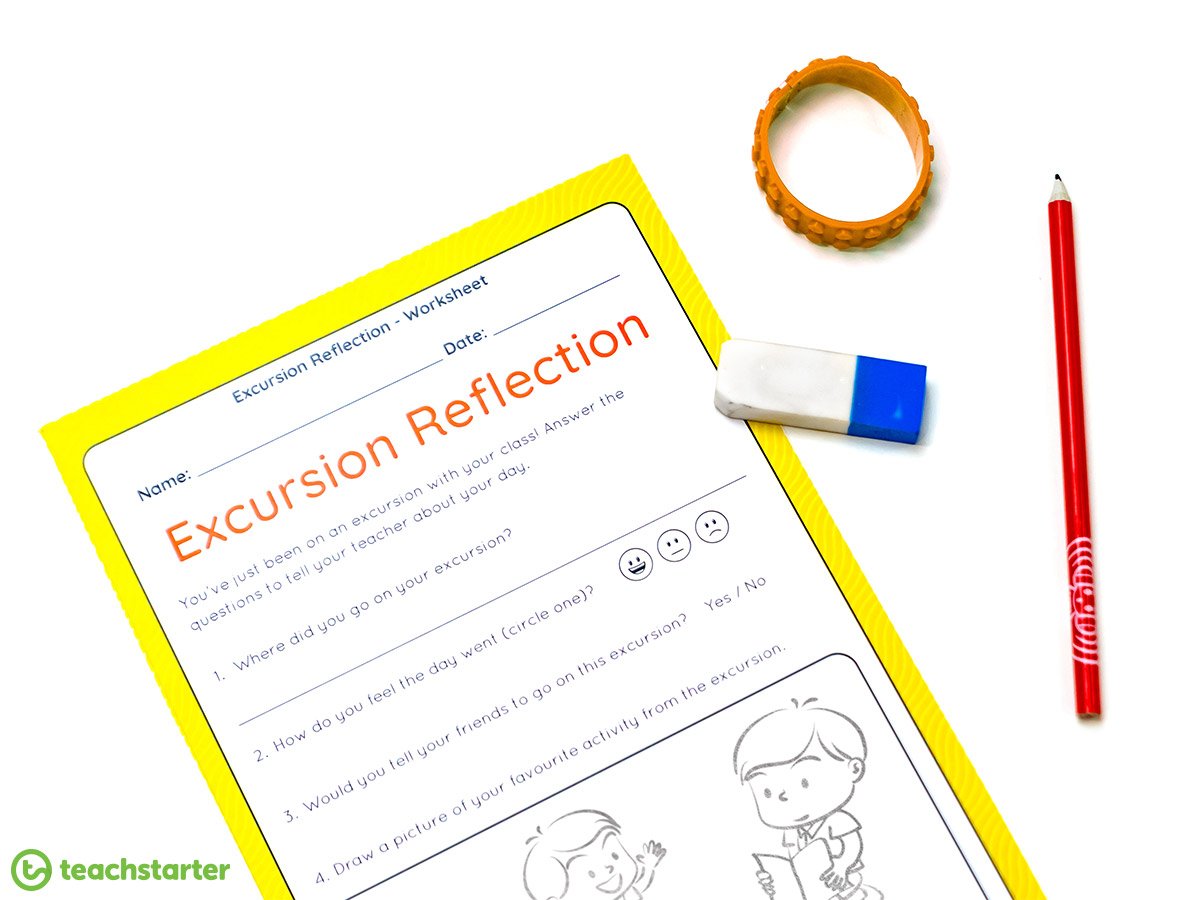Who remembers their favourite school excursions from when they were a child?
What made the experience memorable for you? The place? The topic?
For some of us, the best excursions were the ones where life felt like an adventure, rather than a learning experience (despite all the learning we did!).
No matter the reason, school excursions were always an exciting occasion as a young student. Learning was never so fun as when it was taken away from the classroom!

Why Go On a School Excursion?
Now that we’re all grown up and have become teachers, we know the reality – that planning a school excursion can often be a mammoth (and stressful) task. Co-ordinating with venues, transport, parents, and school administration is more than a heavy juggle for some of us!
Despite this fact, you can’t deny that excursions are invaluable for our students learning!
Excursions are a great opportunity to engage your students in meaningful, active learning experiences.
Engaging in learning experiences outside the school grounds encourages students to:
- experience external natural stimuli that can’t be replicated in the classroom (for example, animals living in a rockpool)
- broaden their worldviews (for example, eating foreign food at a restaurant)
- learn from specialist educators (such as curators of a museum)
- participate in hands-on activities that aren’t feasible for the classroom (like riding on a steam train!)
- have their curiosity stimulated by a different environment.

If I were to continue with all the reasons that excursions are beneficial for your students, we would be here all day. And besides, I’m sure I don’t need to convince you! So let’s move on to the question you’re all asking…
How can we make excursion planning a breeze for teachers?
Planning a School Excursion
Planning a school excursion doesn’t have to be stressful. Breaking each task down into manageable chunks will help you to easily fit excursion planning into your daily classroom planning!
To help you get started, we have developed something wonderful! We have put together a Pre-Excursion Checklist to help take some of the stress and strain out of planning a school excursion.
This wonderful checklist will give you a relevant timeline and help you tick off each step as you progress through your planning. Get ready for a stress-free excursion experience for you and your students!
Research
The most important thing to remember when planning an excursion is that its purpose is more often than not to be an educational experience for your students. When deciding on the ideal location for an excursion you should keep in mind a few questions.
Do the learning experiences:
- align with my curriculum?
- align with my class’s learning goals?
- match my students’ abilities and are they age appropriate?
- provide a location for a food/play break if needed?
If it looks good on paper, the next step is to visit the location yourself. Make sure that the location is suitable for each of your children. I once made the mistake of taking my students to the Botanical Gardens, without checking it out first. Most of the students had a ball, except for one poor child with a physical constraint. When I reached out to the venue beforehand to find out if the location was wheelchair accessible, I did not realise that there would be quite so many hills for him to push himself up. Lesson learned – visit the place first next time.
Prepare
Once you have found a suitable venue for your class, the next step is to prepare all the necessary paperwork.
Each school has unique forms to fill out, so if you’re unsure then have a chat to your admin. You may have to submit an Excursion Approval Form and provide some sort of Risk Assessment Form for the trip.
Excursion Approval Form
In this form, you may be required to justify the educational benefit of the excursion – make sure you’ve done your research properly!
You may also need to include:
- the cost of the excursion (depending on how many students and adult helpers/teachers you will be taking)
- the transport required
- the excursion date and time
- the excursion day schedule.
It might be a good idea to tentatively book in with the venue so you know when they are free. You can always change/cancel later!

Risk Assessment Form
Think about what risks the students might come across while travelling to and from the excursion, as well as on the actual excursion. If you’re lucky, the venue will provide you with some of this information so don’t be afraid to ask!
Plan
Approximately two weeks before the day of the trip, send home a note to parents to let them know what you have planned for the class. Most schools will have a pre-prepared permission slip to send home to families – all you have to do is put in your particular excursion information and you’re good to go!
A note home should include:
- the date and time of excursion
- things to bring (do students need to bring their whole school bag or just a small pack? Will they need a towel, hat, drink bottle, pencil case etc?)
- food requirements (are the students going to bring their own packed lunch or will there be a canteen available?)
- the permission slip rsvp date.
If you need more adult hands on deck, you can also ask for any parent volunteers – specify how many you need and make sure you tell everyone it’s first in, best dressed!

Parent helpers make great additions to the day, especially if you’re going to group your students! Decide on your student groups well in advance – I would always try to keep the tricky kids separated and save the more difficult cases for the group I would be in charge of.
Once you’ve decided on your groups, you’re ready to create name badges which have the student’s name, your mobile phone number, the name of the school and their specific group.
Our editable Name Tag Teaching Resources make great, colourful additions which the students will be sure not to lose! Why not theme them to the excursion?
[resource:2223154][resource:1931414][resource:2138990][resource:2194118]
Lastly, check any equipment that you may need to take with you.
This could include:
- a medical/first aid kit with medication for particular students
- suncream
- meal break play equipment
- spare stationery/worksheets.
Don’t forget – confirm with the venue to make sure you’re set to go!
Get Your Children in the Zone
A school excursion is a great attention grabber for a unit of work! Your students will be thrilled to have the opportunity to extend their knowledge on a particular topic in a real world context.
You might need to prepare an activity for your students to complete while they are on the excursion. This will help them more deeply engage in the activities they are participating in.
Have a look on the venue website to see if they provide any activities or worksheets for students to complete while on the excursion.
If you’re short on time, worksheets like our See, Think, Wonder Template are a great general activity that works in any location!

About a week before the excursion, think about providing a pre-excursion activity to fire up their learning on the particular topic. This has an added bonus of impressing any tour guide who may quiz them!
The day before the excursion, make sure to sit down with your students and have a discussion about behavioural expectations. Remind your students that they aren’t just going on a fun trip, they are representing their school in the wider community.
Some teachers may choose to leave students behind who have not shown that they are capable of meeting the school’s behavioural expectations. This is really up to your school’s behaviour policy, and whether or not the learning experience is worth missing out on for that student. Make sure you have work prepared for any students that may be remaining at school.
On the Day
I’m sure your head will be filled with all the things you need to remember, but despite how much (or little!) sleep you get the night before, make sure you get to school nice and early on the day of the excursion!
Your kids will be buzzing with excitement, and making sure they’re nice and settled in the morning may be a bit of a challenge. Sit them down and make sure they have their belongings (and have some spare on standby!). Have another chat about the schedule for the day and your behavioural expectations.
It’s a great idea to provide your teacher/parent helpers with an ‘in case of emergency’ pack:
- your phone number
- a list of the students (and who is in which group)
- a map of the venue, including an evacuation plan
- the schedule for the day
- any medical records/equipment (such as asthma puffers/medication/epipens) for students who have particular allergies/need special consideration.
Make sure you are punctual for your transportation, and phone ahead to the venue if necessary to let them know you’re on your way!

The last thing to remember on the day of the excursion is – have fun! You’re on an amazing learning journey with your students, and seeing their wide-eyed wonder at the experiences of the day is enough to make any teacher forget the stress and strain of excursion management.
After the Excursion
Your class may feel like learning is a little anti-climactic after the excitement of excursion day. However, now is the best time to keep their attention and link their learning to their hands on experience.
An Excursion Reflection Worksheet is a great idea if you want them to reflect on their day. It provides your students with the opportunity to link the activities they participated in to their in-class learning, and feeds your future lesson direction. Gauge your students’ abilities to decide whether an Excursion Reflection Worksheet – Early Years, Excursion Reflection Worksheet – Middle Years or Excursion Reflection Worksheet – Upper Years is best for them.
Your students will draw on the experiences gained during the excursion for years to come. Not only the lesson content, but the social and community exposure they received as part of the day. You really can’t get better than that!









Comments